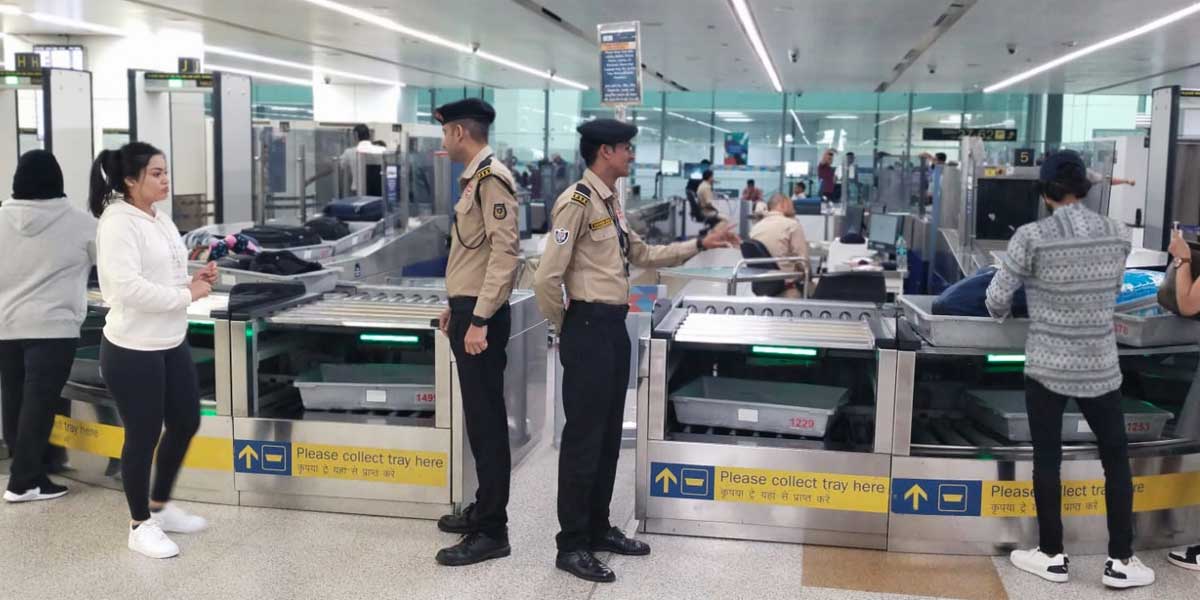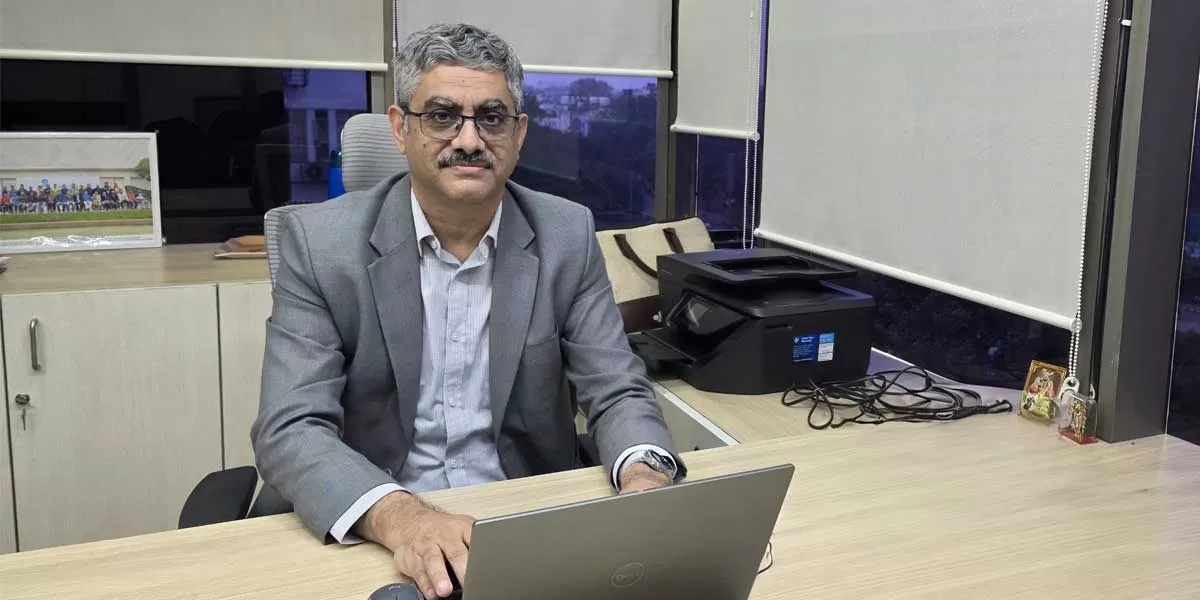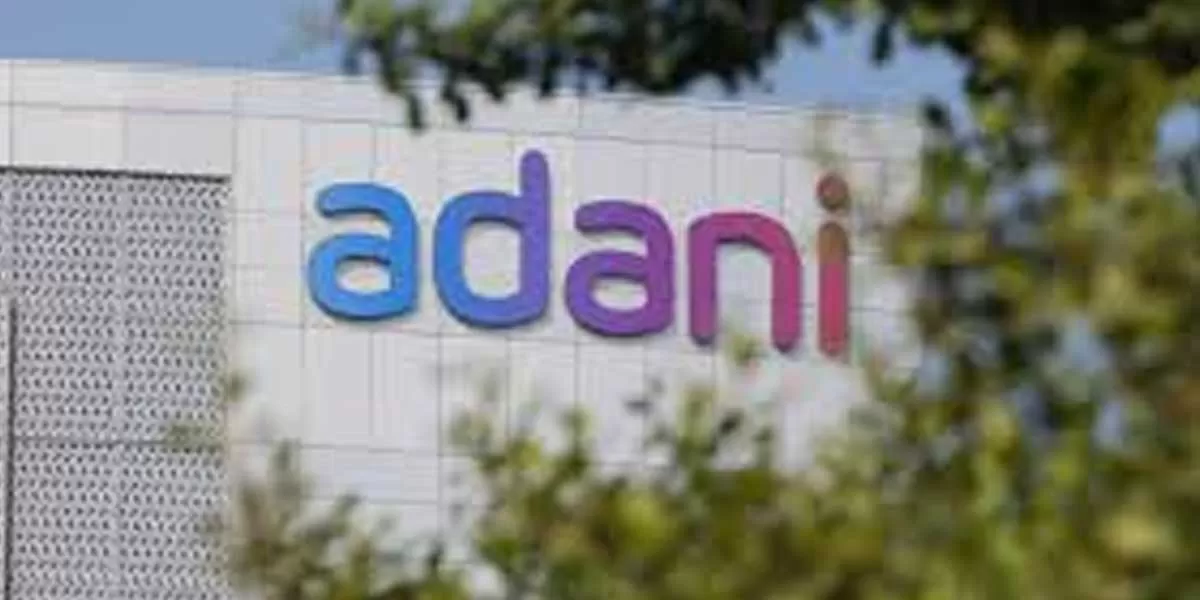CW talks to experts in different classes of real estate to understand what works best.
Hospitality spaces
By Divakar Shukla, General Manager, Holiday Inn, Chennai OMR IT Expressway, Brigade Hospitality
We follow layered protection – defenceindepth – to deter and delay attackers, to create time to respond and mitigate the situation. Boom barriers at the main gate to prevent the entry of any vehicle plus vehicle screening form our first layer. Our second layer at the main porch involves screening people and their belongings using baggage scanners, doorframe metal detectors and handheld metal detectors. Our third layer of protection includes CCTV surveillance, access-controlled doors and elevators, and 24×7 security patrolling.
Our hotel is also equipped with an EST3 addressable fire detection panel integrated with hooters, jack phone, access control, pressurisation fan and public announcement system.
We have installed emergency pull cord alarms in rooms and washrooms for the physically challenged, emergency phones in vulnerable areas (such as the gym, swimming pool, elevators and reception), fire-suppression systems in the IT department and kitchen, portable fire extinguishers and hydrant points, fire exit route maps and signage, and automated external defibrillators (in the gymnasium). We provide electronic safe lockers in guest rooms. We use walkie-talkies for swift communication and mega phones to address mass gatherings. And we have thought out a building evacuation plan.
Installing all these layers would cost Rs 65-75 per sq ft as per the following breakdown.
Hospitality building security cost breakdown
It is essential for hotels to keep up with the latest wireless technology because next-generation guests come with very diverse client devices to connect to our network. But this is a challenge because wireless technology migration happens on an average once every four years. After the implementation of the IHG connect, there will bea centralised internet authentication page for all IHG hotels, enabling auto recognition for IHG Rewards Club members, allowing guests to sign in once and remain connected at all IHG Connect-enabled hotels during future visits. IHG will also activate multiple services like IHG Studio and mobile check-in/check-outs. This will require us to install Cisco Meraki devices including a firewall, core switches, edge switches and access points. We estimate this project to cost Rs 1,42,00,000 over our 2,28,640 sq ft property.
Airports
By Videh Kumar Jaipuriar, CEO, Delhi International Airport Limited (DIAL,a GMR Airports Infrastructure Limited led-consortium operating andmanaging India’s busiest airport)
Safety and security solutions for land side operations include automatic number plate recognition and FASTag-based parking management systems, CCTV surveillance cameras, boom barriers and bollards to regulate vehicle access and prevent forced entry to key areas, and signboards to disseminate information.
Within the airport terminals, we use e-gates and digiyatra to validate passengers, QR code readers to recognise and capture digital information, CCTV surveillance cameras, RFID-based access control to validate staff at staff entry gates, turnstiles to control entry and restrict free movement, inline hold baggage inspection systems (ILHBS) with the latest backscatter technology, and laser barcode readers to identify and direct baggage to the designated aircraft.
Security checkpoints make use of BCAS-approved door frame metal detectors, handheld metal detectors, x-ray baggage inspection systems, and multi-zone walkthrough metal detectors with varied sensitivity levels to detect security-restricted items. Access-control systems in the terminal building include simple lock and key systems and EM lock/latch- based RFID/biometric/PIN-activated door access-control systems.
At the air side, we use perimeter protection and intrusion detection systems and ensure that our boundary walls are of a suitable height and installed with taut wire, beam sensors and OFC/magnetic/seismic vibration sensors. Critical areas along the boundary wall are monitored continuously through CCTV cameras validate alert, tracking and investigate. Access control includes the movement of vehicles and individuals strictly as per the DGCA guidelines.
A security operations command centre manned 24×7 by the CISF ensures surveillance of baggage handling and passenger movement in the terminal and on certain land side portions.
We are considering various technologies to detect and identify drones. So far, our optional countermeasures are to electronically or physically neutralise the drone.
Cybercrime is a global threat, especially in critical infrastructure that uses technology to manage operations. Through Raxa, we deploy solutions to check the vulnerability of our CCTV and IoT networks.
Residential development
By V Gopal, ExecutiveDirector - Projects & Planning, Prestige Group
In residential developments of the Prestige Group such as PrestigeKingfisher Towers, Prestige Hermitage and Prestige White Meadows, access-control systems restrict entry/exit to/from the service and utility spaces to the service personnel. Further, access-control systems installed in the elevators limit the entry of residents to their respective floor. Going forward, these access-control systems will be made touchless and QR coded in keeping with
contemporary trends.
CCTV surveillance and RFID boom barriers are a given in all our projects. Projects such as Prestige Kingfisher Towers, Prestige Hermitage and Prestige White Meadows have bollards as a security check.
Our fire-protection system includes hydrants and sprinklers as perthe statutory requirement of local fire authorities and as recommended by the NBC. Additionally, we also provide automatic conventional/analogue addressable type fire-detection and alarm systems in common spaces like lobbies, service areas and residential units based on the guidelines. These are monitored 24×7 at a centralised location (building management systems room) and at various levels with repeater systems.
Hospitals
By Neelesh Shinde, Group CTO, Jupiter Hospital
Hospitals are more intensely populated with electrical devices than homes or commercial spaces, and host people who are neither familiar with the building layout nor (in most instances) capable of evacuating by themselves in case of a safety emergency. These two aspects bear upon the intensity of security and safety solutions in hospitals.
From the fire and life safety perspective, healthcare facilities need fire alarm public announcement systems, fire-prevention systems, life-safety systems, means of evacuation because it is virtually impossible to evacuate patients from the entire building so they are shifted to a safe compartment within, and firefighting systems (automated). From a facility safety perspective, firefighting systems must be supported with compartmentation design and passive fire-protection systems.
In the eventuality of a major fire, the main power supply may need to be switched off. Therefore, emergency power is required to run fire pumps, pressurisation/ventilation fans, fire lifts, exit signage (preferably self-illuminated), emergency lighting, fire alarm system and public address systems.
Some essential building design features include a dedicated shaft for electrical cables, which must be sealed off with two-hour fire-rated sealants across all floors. Indoor dry-type transformers as well as DG sets must be located inside two-hour fire-rated walls and doors. Diesel generator sets should be installed only on the ground floor or in the first basement. Battery banks of UPS systems should be enclosed in a two-hour fire-rated compartment provided with air-conditioning. Provision for lightning arresters should preferably be made at the time of construction itself as their down conductors should not be routed through any shaft. Critical care areas should preferably have 2-m-wide doors.
Machine rooms and bunkers housing radiation-emitting equipment like CT, PET CT scanners and x-ray machines and cancer treatment linear accelerator machines must be constructed as per drawings approved by the Atomic Energy Regulatory Board. Periodic preventive maintenance is essential for the safety systems (see box) while an electrical safety audit may be done annually and fire drills carried out as per schedule.
Preventive maintenance procedures frequency for safety solutions installed in a hospital
The installation of MEP services usually costs around Rs 1,200 per sq ft plus taxes, of which the fire-fighting mechanical system would cost around Rs 125 per sq ft (exclusive of taxes). Maintenance charges are about 6-7 per cent of the installation cost, with an annual escalation of 5 to 8 per cent. Evacuation lifts could cost about Rs 45-50 lakh per unit as per configuration.
Malls
Pallavi Matkari, Chief Design & Sustainability Officer, Runwal
We maintain security by ensuring that the entire mall (R-City Mall, Ghatkopar West)is manned and monitored, and the surveillance is recorded. Our security protocol takes into consideration the traffic and flow of patrons, staff and goods, and includes the efficient deployment of security personnel and ensuring that all necessary safety measures are taken.
All entry and exit points into the mall are monitored by security staff trained to frisk people (staff and patrons) and check bags. The main entrances are monitored with baggage scanners.
Manual under-vehicle scanners and interior scanners help keep tabs on cars entering and exiting. Manual tracking is also maintained. Reports recording the material brought in and taken out are readily available.
CCTV cameras help monitor key areas, especially entry and exit points. The CCTV control room and the building management system are manned round the clock.
Fire alarms are connected to the public announcement systems. Across the mall, there are a handful of prohibited/authorised access areas that are locked areas during operational hours. Our security systems are synced to automatically unlock these doors if the fire alarm goes off. Store-level fire alarms are mapped to the entire mall’s fire alarm system, to alert in time for the mall security to take corrective action even if required in an individual store.


















